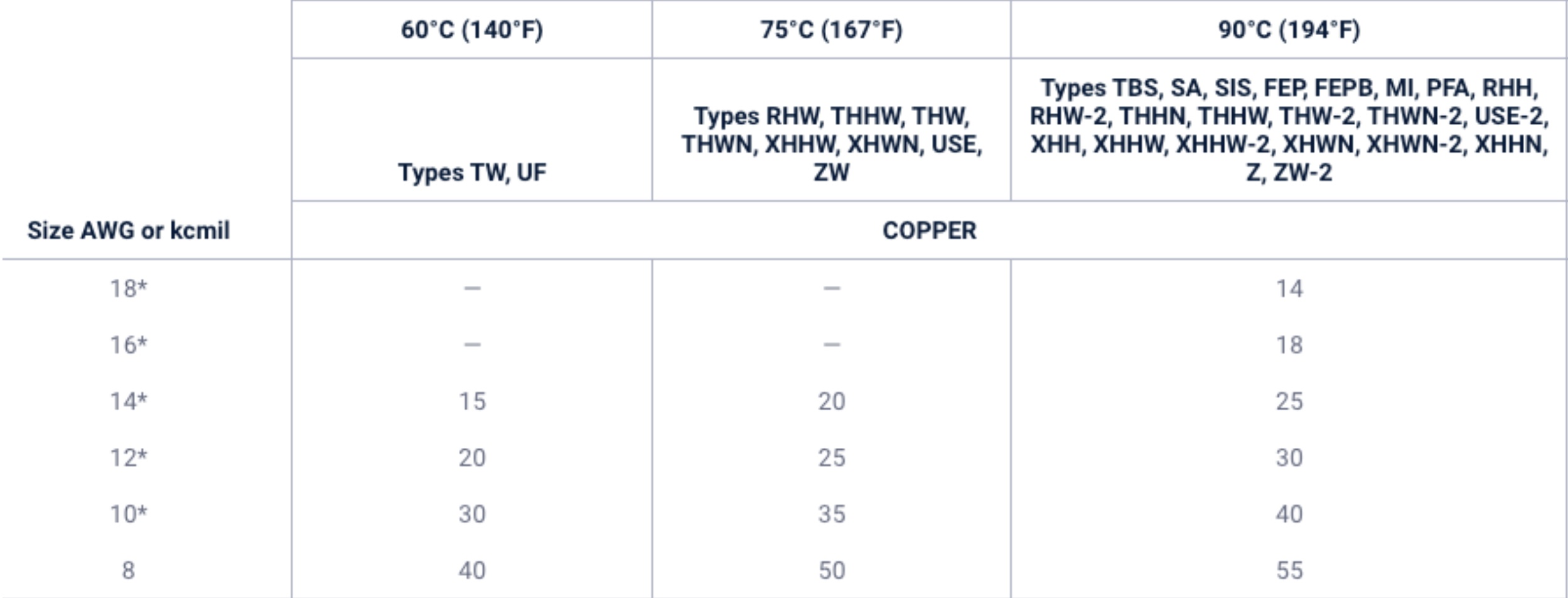September 16, 2025
Guide to Conductor Sizing, Insulation & Termination Temperatures on NEC Electrical Exams
NEC Exam Guides
Understanding conductor sizing, insulation, and termination temperatures is crucial for electrical safety and code compliance. These topics are frequently tested on NEC electrical exams because they directly impact the performance and longevity of electrical systems. Proper conductor sizing ensures that wires can handle the intended current without overheating, while correct insulation and termination temperatures prevent degradation and potential fire hazards.
A 500 kcmil THHN copper conductor is terminated on a 75°C rated circuit breaker. The maximum allowable ampacity of this conductor is ________ amperes.
The ampacity of a size 4 AWG THW copper conductor, when installed in a conduit with three other current-carrying conductors of the same size and insulation, and in a location with an ambient temperature of 98°F, is ________ amperes.
When a cable is run in free air with four cables per phase and one end terminates on a 75°C circuit breaker, the minimum size of single aluminum XHHW-2 conductor that can be used to feed a 2000 A, 600 V, 3Ø MCC is ________ kcmil.
Key phrases to look out for in these types of questions:
When you spot these elements:
Lowest Equipment Temperature Rule:
Ampacity-Based Rule:
To illustrate it more clearly, let’s do some questions (Use Table 310.16 below to answer them):
Q: What is the minimum size XHHW insulated copper conductor required to supply a 32 amp load where the temperature rating of equipment terminations is not listed?
A: 8 AWG. Rate based on 60°C column as termination temperature is not listed. Please note although this is XHHW conductor which is rated at 75°C, we still use 60°C
Q: What is the minimum size XHHW insulated copper conductor required to supply a 32 amp load when terminated on a 60°C/75°C circuit breaker?
A: 10 AWG. Rate based on 75°C column as termination temperature allows for 75°C.
Q: What are the minimum size XHHW insulated conductors required to supply a 32 amp load being protected by a circuit breaker rated 60°C/75°C where the equipment has terminations rated 60°C?
A: 8 AWG. Ampacity based on the 60°C column as it's the lowest termination temperature in the circuit (the equipment terminations).
Q: What are the minimum size THHN insulated conductors required to supply 32 amps when terminating on a circuit breaker where the temperature rating is not listed, in a motor circuit with a controller that has a termination temperature rating of 90°C?
A: 8 AWG. Rate based on 60°C column as the circuit breaker termination temperature is not listed and the circuit is below 100A.
Q: What are the minimum size THW insulated conductors required to supply a 32 amp load where the equipment has terminations rated 90°C?
A: 10 AWG. Ampacity based on the 75°C column as the conductor insulation only allows for 75°C even if the equipment termination temps are rated 90°C.

What is the max ampacity of a size 4 AWG THW copper conductor with termination temperature of 60°C when installed in a conduit with three other current-carrying conductors of the same size and insulation, and in a location with an ambient temperature of 98°F?
Step 1: Determine Conductor Temperature Rating
Step 2: Identify Installation Method & Ampacity
Step 3: Apply Temperature Correction Factors
Step 4: Apply Adjustment Factors
Calculation
Download now to access 3,000+ practice questions and master the NEC Code!
